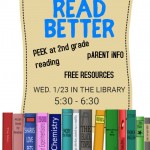With so much research and information on how to best support students with learning disabilities it can be incredibly difficult to figure out what path is the best. You may be lucky enough to have access to a reading intervention program for middle school students such as Read 180 or Corrective Reading, however, you may also be on the other end of the spectrum where you are attempting to differentiate a curriculum used in the middle school with general-education students. This can feel like an uphill battle, particularly when students are struggling with decoding, recognizing multi-syllabic words, or reading fluency. No matter whether you have curriculum, or you are attempting to put something together for a middle school students, here are 6 things to keep in mind when building reading skills for middle school students with disabilities.
- Skip the elementary phonics instruction. Students who are in the upper grades have spent years trying to have someone teach them phonics. This is a critical skill, isolation of phonics skills are not working for the student. Trying again for another year takes away from the things you can capitalize on to help students.
- Leverage your technology. Some public libraries have free access to books that can be downloaded as audio books. This helps allow students to hear high-interest books and focus on reading comprehension instead of keeping a student focused only on the phonics. By leveraging your technology you can ensure students are exposed to grade level complex text. I recently read an article which talks about the Who, What and Why of Complex Text. It stated that complex text for students serves multiple purposes and it is okay as a teacher to be picky when choosing the right stories to expose your students to. Without these valuable opportunities to complex text we are robbing students of their ability to experience a world they may not have otherwise been exposed to, (Excerpt from Transformational Technology).
- Learn a student’s Lexile and get books from the library that are within their Lexile range. The rule of thumb is to have students read 50 above and no more than 100 below a student’s Lexile range in order to ensure they are still able to read the material without too many problems. There are several reading sites available such as, Macmillan English, http://www.macmillanenglish.com/training-and-events/ which allows readers to take an online reading assessment and then gives a Lexile range. It further gives some suggestions on books that are in the student’s reading range.
- Conduct small-group reading sessions or book studies with students based on their Lexile ranges. Grouping students who have similar Lexile ranges allow readers to read books that are within their range without having to worry that a peer is a better reader than them. It further allows you as the teacher to expand on students understanding of key vocabulary and comprehension. The goal is to help students have deep conversations about the texts they are reading while not being stuck on surface level concepts.
- Stay consistent. No matter, which program or curriculum you are using staying consistent and use the curriculum with fidelity. This will ensure students success instead of bouncing around through concepts.
- Connect the concepts students are reading to personal interests. Students are more likely to read material they are interested in. While we hope that every student engages in reading texts such as Huckleberry Fin or Hatchet, gaining students interest in reading is the first key. A student who is interested in the book or the topic they are reading about is more likely to engage in other high-interest reading texts. Fighting students to read a story that has nothing to do with a topic they are interested in just becomes more of a struggle for students. Think about a topic that you are not interested in, sit down and try reading 300 pages. It may take you a long time because your interest falters, and you have to keep re-reading the text to stay focused.
Helping readers who are struggling with phonics and decoding skills can seem like a daunting task, especially when they are in the middle school grades. Focusing on the skills they need in comprehension and building a love of reading can change the world for a student.
“A reader lives a thousand lives before he dies…The man who never reads lives only once.” George R.R. Martin.









